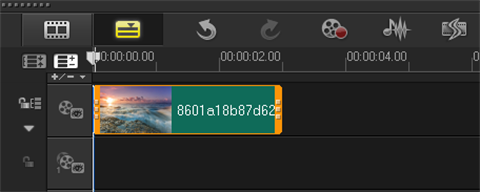When working with a NativeScript application view where a user can enter input, the native application Keyboard Input overlays the TextField component. While this doesn't stop the user from entering text, it disrupts the UX flow and looks bad from a UI perspective.
How can I get the Keyboard to not overlay the input, but instead appear underneath it like other native applications can do?
Update 2
Now that it no longer overlays, I've noticed that when I leave the application to switch to another one or suspend the NativeScript app, when I come back to it the problem reappears. What can I do to persist the original behavior?
After stumbling around a few other discussions and resources:
- Keyboard in going over the page view
- Android keyboard overlay
- Keyboard overlapping textview
There were a few takeaways from these resources which I'll review below.
Template Flow
First off, you'll need to ensure your page layout mirrors something like below:
ScrollView
> StackLayout
> GridLayout
> SomeElement
> GridLayout
> TextField
Android Soft Input Mode
This relates to the on-screen keyboard that displays when a text field in the UI receives focus. One trick to ensure the keyboard does not overlay your textfield is to ensure you have the property windowSoftInputMode set in your AndroidManifest.xml. You can either use adjustResize or adjustPan. I'm not entirely sure of the differences, but some users have reported either or both working so you might need to play around with which works for your case. You can read more about these two flags here.
<?xml version="1.0" encoding="utf-8"?>
<manifest xmlns:android="http://schemas.android.com/apk/res/android"
package="__PACKAGE__"
android:versionCode="10000"
android:versionName="1.0">
...
<application
...
android:windowSoftInputMode="stateHidden | adjustPan">
Update 2
I believe there is something getting reset within NativeScript which is causing the flag set by android:windowSoftInputMode to be reset when the application is suspended and resumed. To get around this, you'll need to make some adjustments in the controller of the view itself to watch for these events to happen in your app's lifecycle and then retroactively enable the flags again.
some-view.component.ts (TypeScript)
import { Component, OnInit } from '@angular/core';
import * as app from "application";
import {
resumeEvent,
suspendEvent,
ApplicationEventData,
on as applicationOn,
run as applicationRun } from "tns-core-modules/application";
declare var android: any; // <- important! avoids namespace issues
@Component({
moduleId: module.id,
selector: 'some-view',
templateUrl: './some-view.component.html',
styleUrls: ['./some-view.component.css']
})
export class SomeViewComponent implements OnInit {
constructor() {
applicationOn(suspendEvent, (args: ApplicationEventData) => {
// args.android is an android activity
if (args.android) {
console.log("SUSPEND Activity: " + args.android);
}
});
applicationOn(resumeEvent, (args: ApplicationEventData) => {
if (args.android) {
console.log("RESUME Activity: " + args.android);
let window = app.android.startActivity.getWindow();
window.setSoftInputMode(
android.view.WindowManager.LayoutParams.SOFT_INPUT_ADJUST_PAN
);
// This can be SOFT_INPUT_ADJUST_PAN
// Or SOFT_INPUT_ADJUST_RESIZE
}
});
}
}
I also had the same issue,
TNS Version: 6.3.0
Android Version: 9
Using RadSideDrawer with nativescript angular
Adding the following didn't work for me
<application
...
android:windowSoftInputMode="stateHidden | adjustPan">
Instead of adding android:windowSoftInputMode in application, add it in activity, check the following.
<activity
...
android:windowSoftInputMode="adjustResize">
Also need to update the style.xml, add the following in LaunchScreenThemeBase
<item name="android:fitsSystemWindows">true</item>
This will fix the keyboard overlay issue but it will create another issue, causing the Status bar / Action Bar to change height when the keyboard is displayed. to resolve that, put the following in style.xml in AppThemeBase (To correct the color of status bar)
<item name="android:windowBackground">@color/ns_primary</item>
In _app-common.scss (To get rid of extra space)
.action-bar {
margin-top:-22;
}





